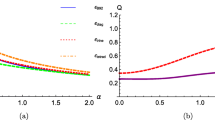Abstract
In this paper we construct the ortholattices arising in quantum logic starting from the phenomenologically plausible idea of a collection of ensembles subject to passing or failing various “tests.” A collection of ensembles forms a certain kind of preordered set with extra structure called anorthospace; we show that complete ortholattices arise as canonical completions of orthospaces in much the same way as arbitrary complete lattices arise as canonical completions of partially ordered sets. We also show that the canonical completion of an orthospace of ensembles is naturally identifiable as the complete lattice of properties of the ensembles, thereby revealing exactlywhy ortholattices arise in the analysis of “tests” or experimental propositions. Finally, we axiomatize the hitherto implicit concept of “test” and show how they may be correlated with properties of ensembles.
Similar content being viewed by others
References
B. Banaschewski and G. Bruns, “Categorical Characterization of the MacNeille Completion,”Arch. Math. 18, 369–377 (1967).
J. L. Bell,Boolean-Valued Models and Independence Proofs in Set Theory (Oxford Logic Guides) (Clarendon Press, Oxford, 1977).
J. L. Bell and M. F. Hallett, “Logic, Quantum Logic and Empiricism,”Philos. Sci. 49, 355–379 (1982).
G. Birkhoff,Lattice Theory, 3rd. edn. (American Mathematical Society Colloquium Publications, Vol. XXV) (American Mathematical Society, Providence, Rhode Island, 1960).
G. Birkhoff and J. von Neumann, “The Logic of Quantum Mechanics,”Ann. Math. 37, 823–843 (1936).
P. A. M. Dirac,The Principles of Quantum Mechanics (Clarendon Press, Oxford, 1930).
D. Finkelstein, “The Logic of Quantum Physics,”Trans. N.Y. Acad. Sci. 25, 621–637 (1963).
D. T. Gillespie,A Quantum Mechanics Primer (International Textbook Company, London, 1973).
P. R. Halmos,Lectures on Boolean Algebras (Van Nostrand, New York, 1963).
M. Jammer,The Philosophy of Quantum Mechanics (Wiley, New York, 1974).
K. Kunen,Set Theory (North-Holland, Amsterdam, 1980).
H. Putnam, “Is Logic Empirical?” inBoston Studies in the Philosophy of Science, Vol. 5, R. Cohen and M. Wartowsky, eds. (Reidel, Dordrecht, 1969).
Author information
Authors and Affiliations
Rights and permissions
About this article
Cite this article
Bell, J.L. Orthospaces and quantum logic. Found Phys 15, 1179–1202 (1985). https://doi.org/10.1007/BF00735530
Received:
Issue Date:
DOI: https://doi.org/10.1007/BF00735530




